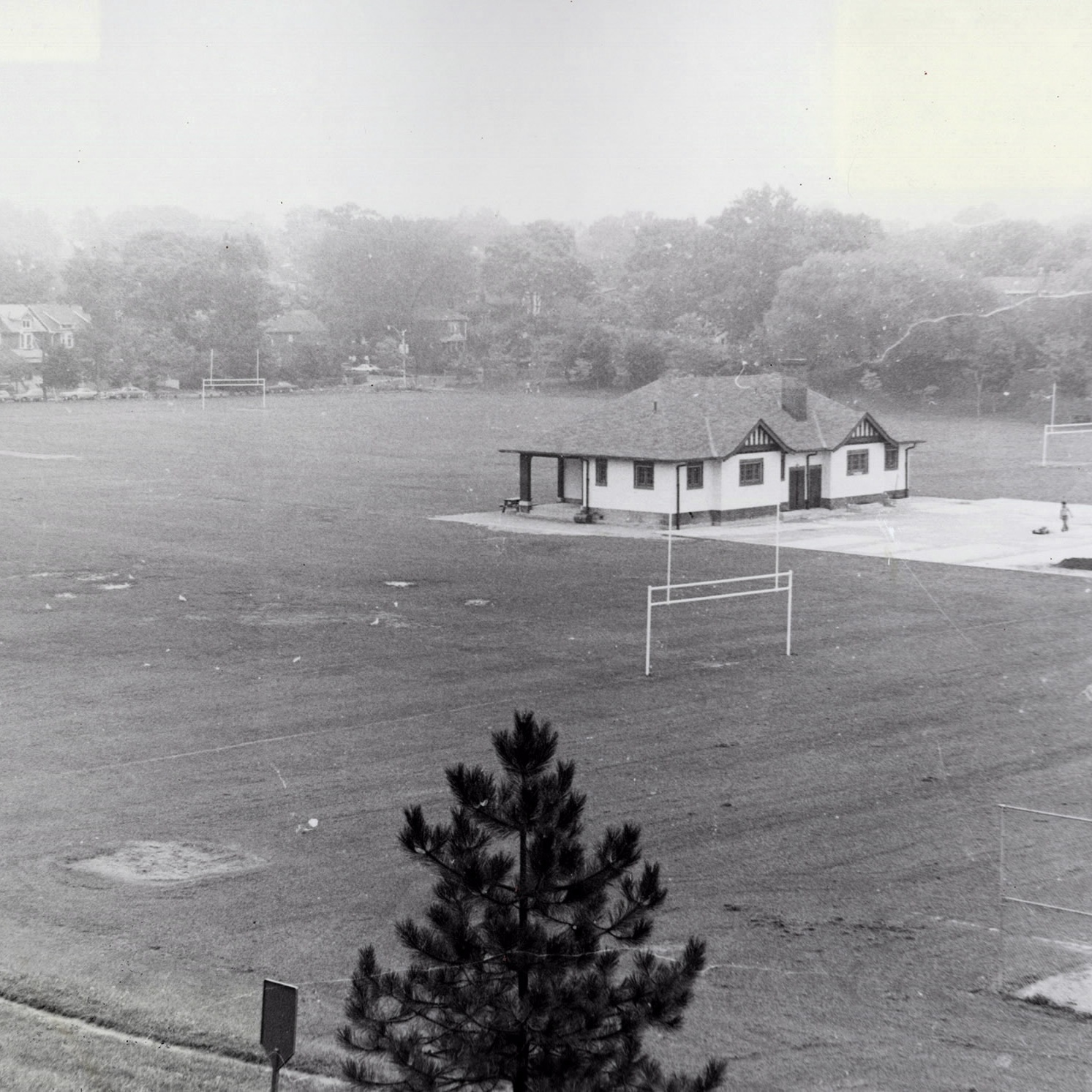Our neighbourhood has a long history, some of it visible when you look hard.
Eglinton Park itself sits on a drumlin, a whale-back hill dating to the last Ice Age. A passing glacier dumped this mass of clay and gravel.
Back in the fifteenth-sixteenth centuries, a substantial Wendat (Huron) village sat atop this drumlin, on the high ground, and its fields of maize spread down its flanks, down to the creek, now buried, that skirted the park’s north-south path. We hear that now and again a gardener still finds an arrowhead, a reminder of our indigenous heritage and of people who once called this home.
In 1885, when North Toronto was still a village north of the city, a man named Pears bought the east side of the drumlin, to make a brickworks. The steep western slopes of the park are cuts, made by the brick-makers, as they dug for clay. The springs that soak the sledding hill in spring are fed by underground water courses that bleed out the drumlin’s sharply cut east side.
Back in 1837, the Upper Canada Rebellion mustered at Montgomery’s Tavern, where Montgomery now meets Yonge. The rebels marched south, to meet redcoats and defeat down near Davisville, and the victorious Tories marched up and took and burned the tavern.
On the tavern’s ground stands Postal Station K, a fine public building by architect Murray Brown, who also designed the Capital Theatre up at Castlefield and the movie house on Mount Pleasant at Belsize. EPRA and its members were deep in discussion with Rockport, the developer who restored the old post office and laid out the present square out front.
The station has interesting art deco reliefs, the last word in trucks and aircraft, in 1937, and a rarity: one of the few royal insignia anywhere to the King Who Never Was, Edward VIII, who abdicated before his coronation.
In 1920, North Toronto was mostly farms. The layouts of ours streets mark the boundaries of their fields.
The intersection of Montgomery and Yonge marks the centre of the old village of North Toronto, incorporated in 1890 and annexed to Toronto in 1912. The post office, fire hall, and police station formed an urban nucleus, with a town hall no longer standing.
For two decades, from 1919, a branch of the Toronto Hunt Club had its clubhouse and stables on Avenue Road south of Roselawn. In the Second World War the Canadian Airforce moved in; vestiges of its presence are still up there, including, behind McLuhan high school, the cupola of the vanished stables.
The Toronto Hydro building, at Duplex dates from 1920. It supported the electrification of North Toronto.
Pictures from the Old Days
Many of these pictures are from Toronto Public Library Archive .
Many thanks to local Historian Lynda Moon for passing them along.














